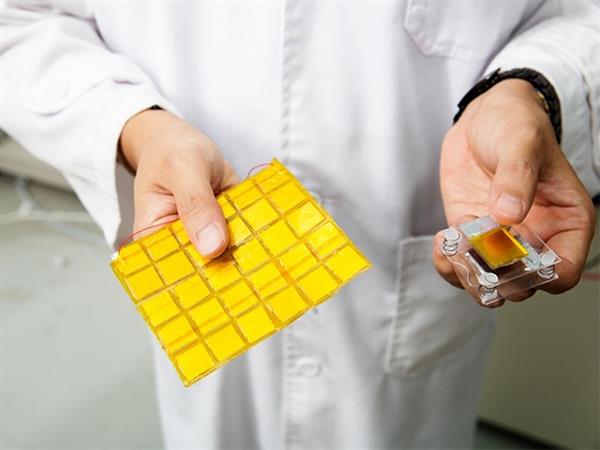Georgia Tech scientists have been exploring the applications and commercial prospects of nano-sized electrostatic generators (TENGs) since 2012. The so-called TENGs are simply the generation of static electricity through friction.
Lei Fengwang learned that recently, the research team of the National Institute of Science and Technology (UNIST) in Ulsan, South Korea, has overcome a technical difficulty that has hindered the widespread application of TENGs technology—the problem of low output power. To solve this problem, they invented a new type of polymer as a dielectric material.

The dielectric itself is an insulator, but polarization occurs when it is connected to an electric field. The presence of an external electric field results in the polarization and depolarization of the dielectric and the function of charge/discharge.
TENGs equipment itself is composed of two different materials that can rub against each other. By friction, materials like glass and nylon can emit electrons, and materials like silicon and Teflon can just absorb electrons. TENGs convert mechanical energy generated by friction into electrical energy that can power small electronic devices.
UNIST researchers have studied TENGs equipment and found that although its characteristics are useful, frictional power generation has some drawbacks. For example, materials in friction cannot be uniformly contacted. Friction leads to serious wear of the material. Static electricity is very sensitive to the humid environment, and power loss during power output is large. Therefore, the Korean R&D team initially focused its research on improving power output. However, during the R&D process, they may have solved some of the environmental issues related to TENGs.
The equipment they published at Science Advances was similar to Georgia Tech's research. However, the new type of polymer dielectric invented by UNIST draws more power from the electrodes and also produces more output power.
An UNIST researcher and co-author of the paper Jeong Min Baik said in an e-mail interview with IEEE Spectrum: “In order to increase output power, we tried to invent new polymers as more efficient dielectrics and developed new device structures. To reduce the internal power loss. As a materials scientist, I think it is very important to synthesize the best polymer as an effective dielectric."
The new polymer's permittivity (used to measure the material's ability to store electricity in an electric field) is almost twice that of the original material. The increase in permittivity also makes its charge density double more than other nanogenerators. In addition, when the researchers directed the dipole toward the thin film, the charge acceptance characteristics of the material were greatly increased, and the power output increased by 20 times.
Baik and his colleagues believe that the significant increase in output power can make TENGs technology more suitable for charging devices.
Baik said: "The ultimate goal of this work is to charge smart watches and mobile phone batteries. I think this is achievable, but it will take some time. The closest target is currently applied to self-generating physical sensors based on frictional static electricity. After solving some issues such as stability (resolved), the final product will be put into use."
Baik's next step is to use the upgraded polymer TENGs to charge smart watches 1%. He said: "In order to achieve this step, I will design a new dielectric layer and integrate the polymer materials again."
Zhejiang Changxing Senda Bamboo & Wood Products Co.,Ltd , https://www.sendaflooring.com